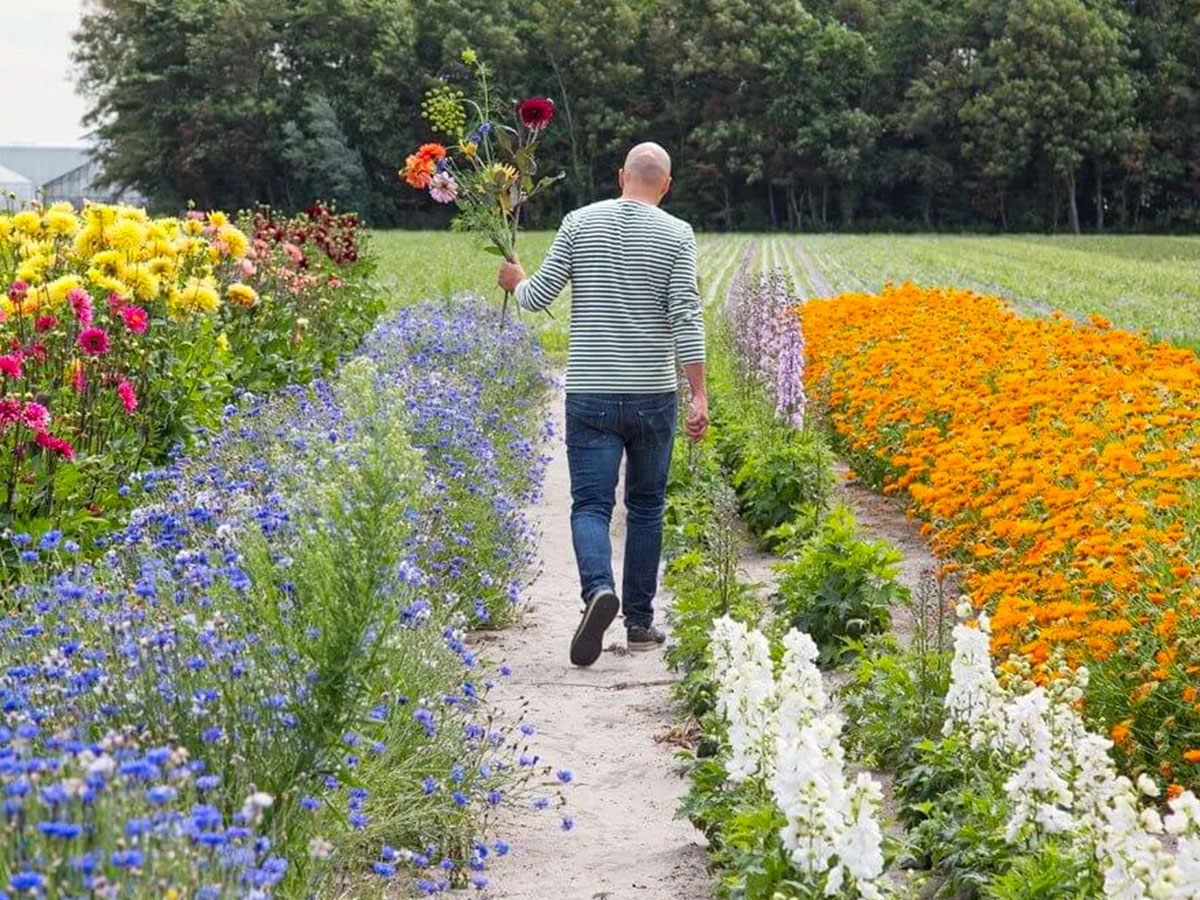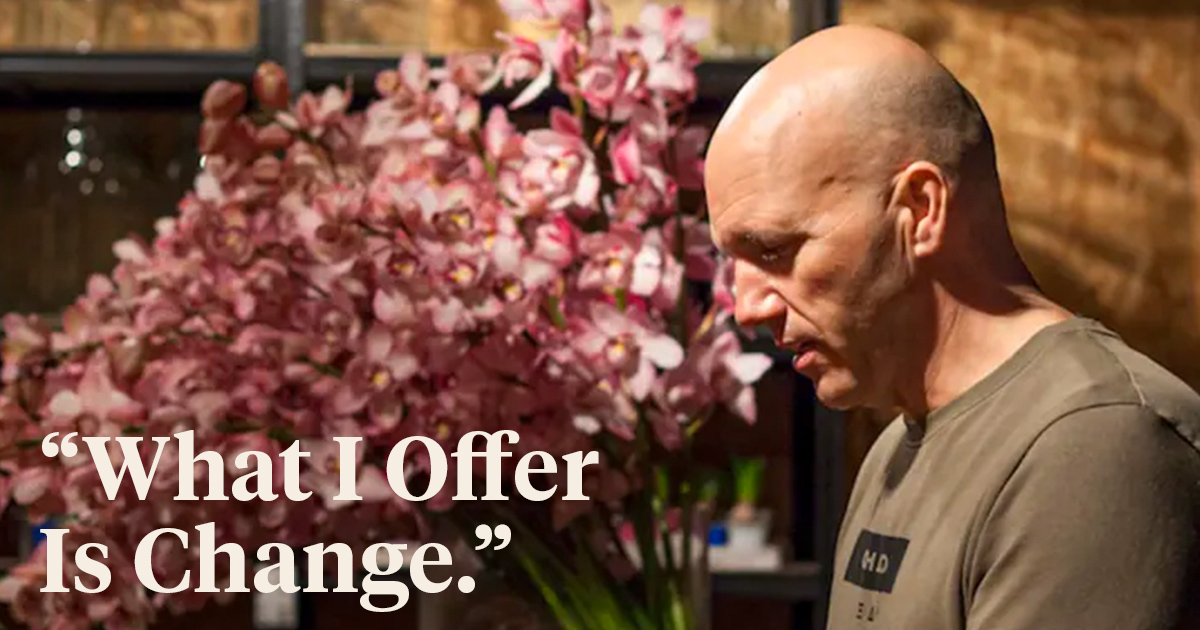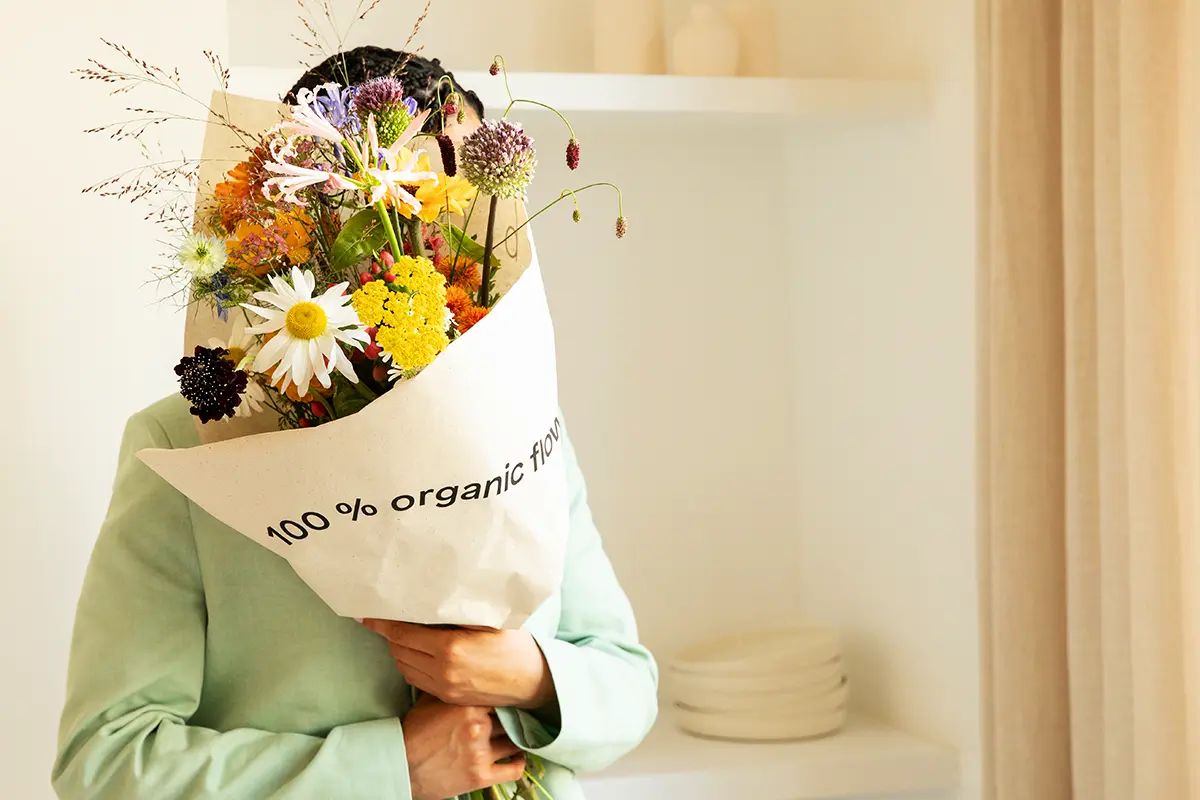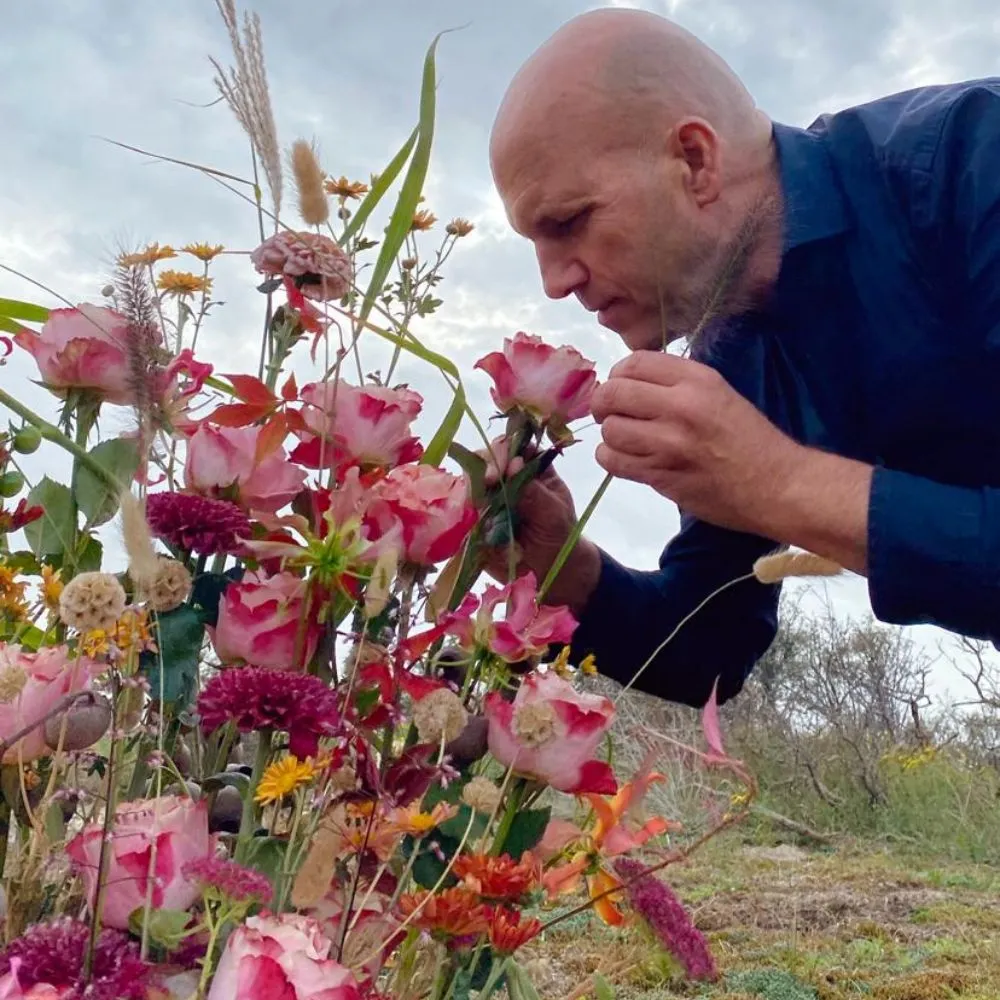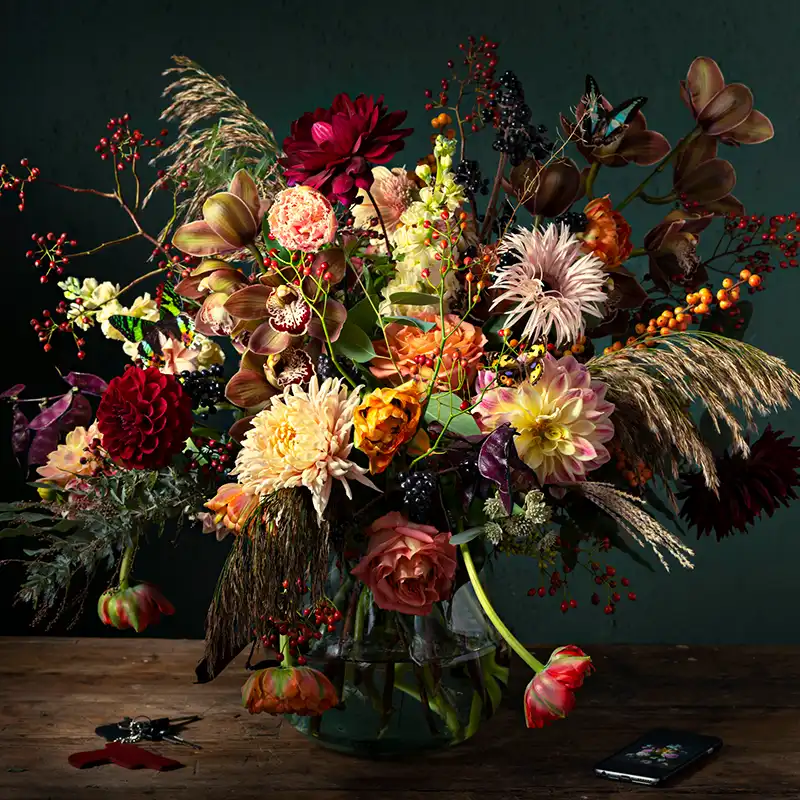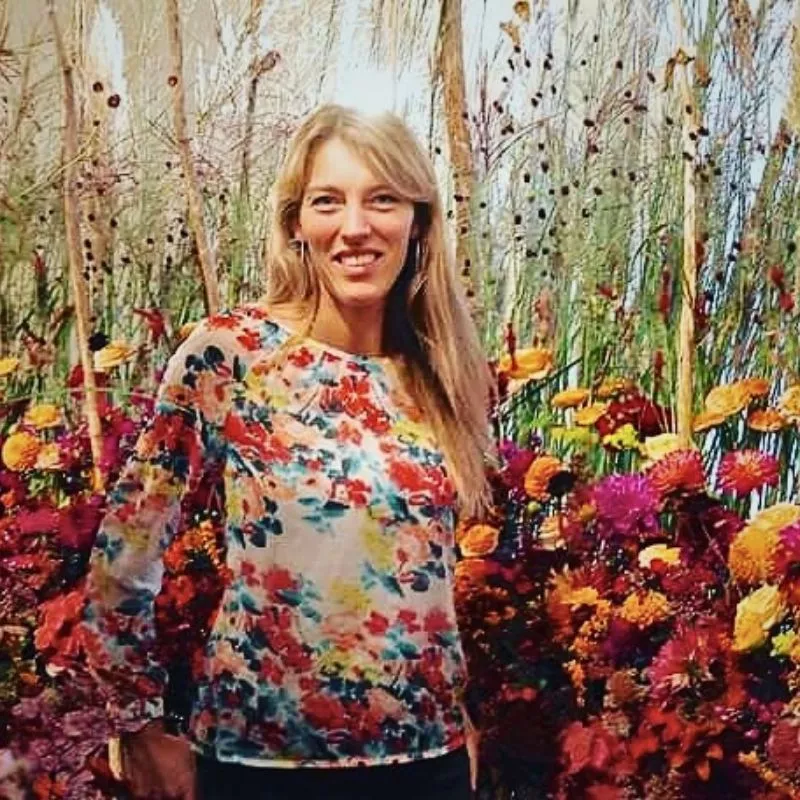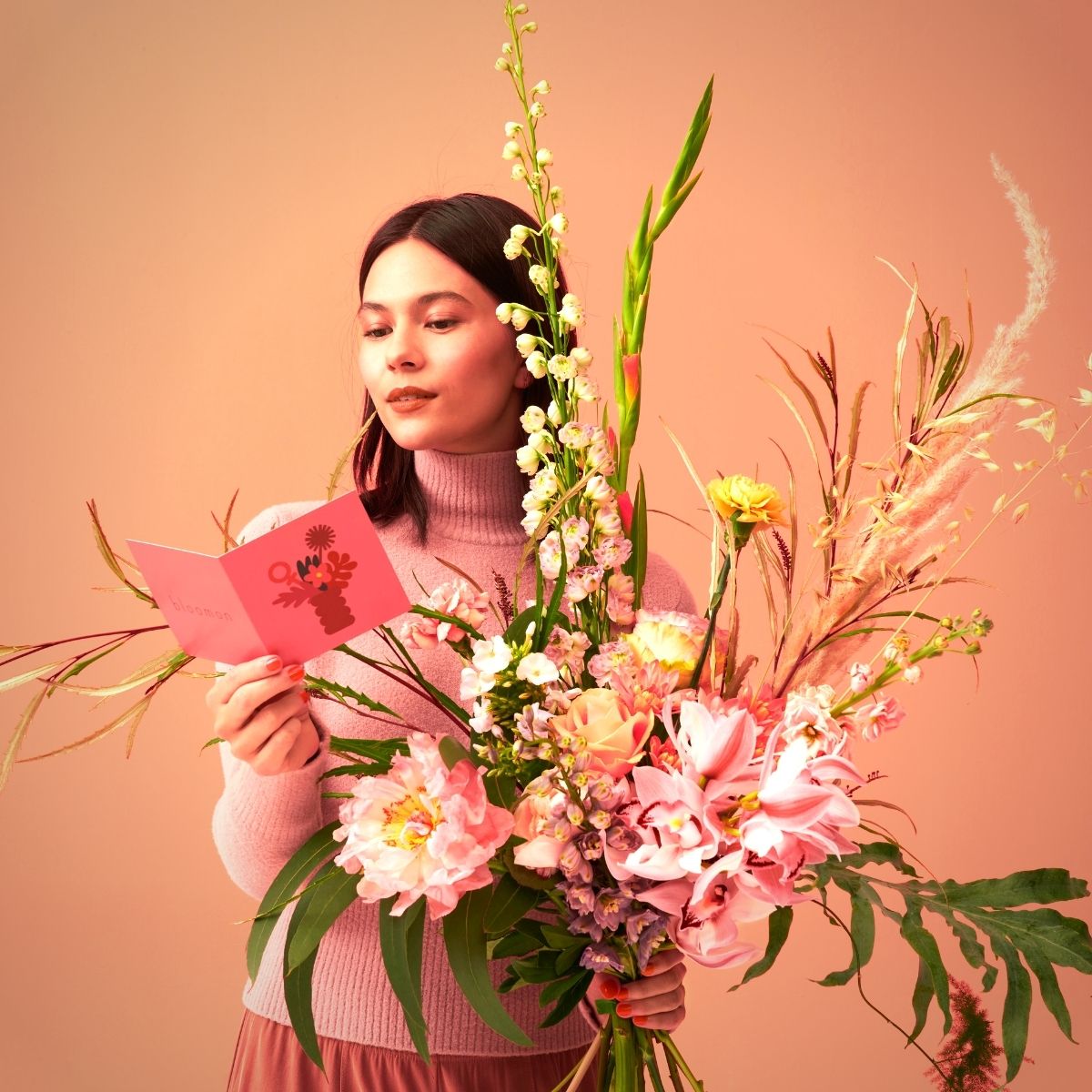Anton van Duijn is a well-known appearance in the floral world, especially with the ongoing success of his brainchild Bloomon, the trendy online florist in several European countries. Anton is the style director there, one of the many roles he is able to play. Because he is eager to tell us why he is so much more than that. He is a botanical designer, a trendwatcher, an entrepreneur, and an innovator. Now he wants to use his knowledge, skills, passion for flowers, and fire in his heart to help florists and growers who are suffering – consciously or unconsciously – from slowly sinking. How? That's exactly what he will tell in this inspiring monologue.
The Driving Force of Anton van Duijn
I have been working in the flower business for forty years, full-time since I was 16 years old. I was born in 1967, the peak year of flower power, so it's not surprising that I ended up working with flowers. I started at a young age and have done pretty much everything you can imagine with flowers: decorated for large companies, worked as a final stylist for businesses, dressing up interiors, and even spent about five years on and off in Israel. I have done a lot, and because I have been doing it for so long, I am quite knowledgeable in almost every aspect of floristry. My greatest strength at the moment is that I have owned and operated many shops, and I have worked as a manager in others. Whenever I walk into a shop, I can quickly see what's going on.
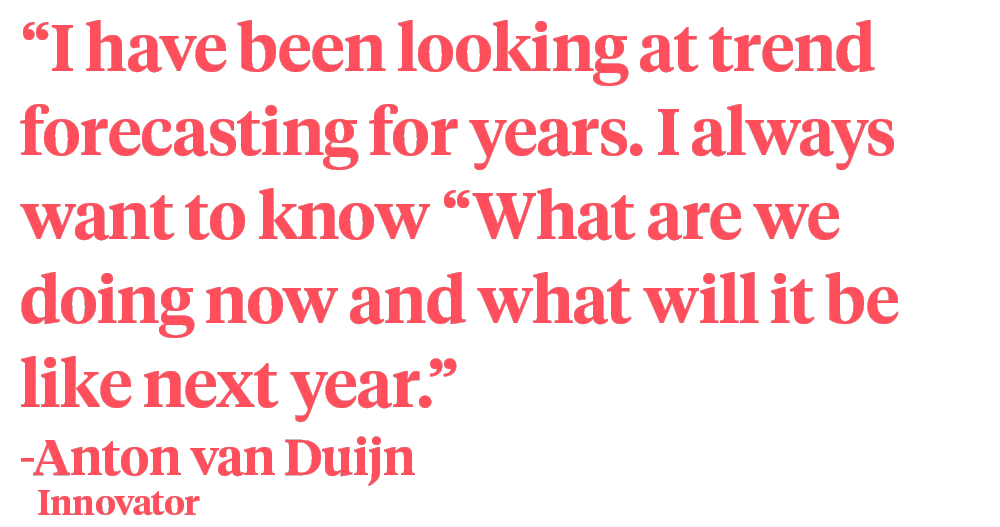
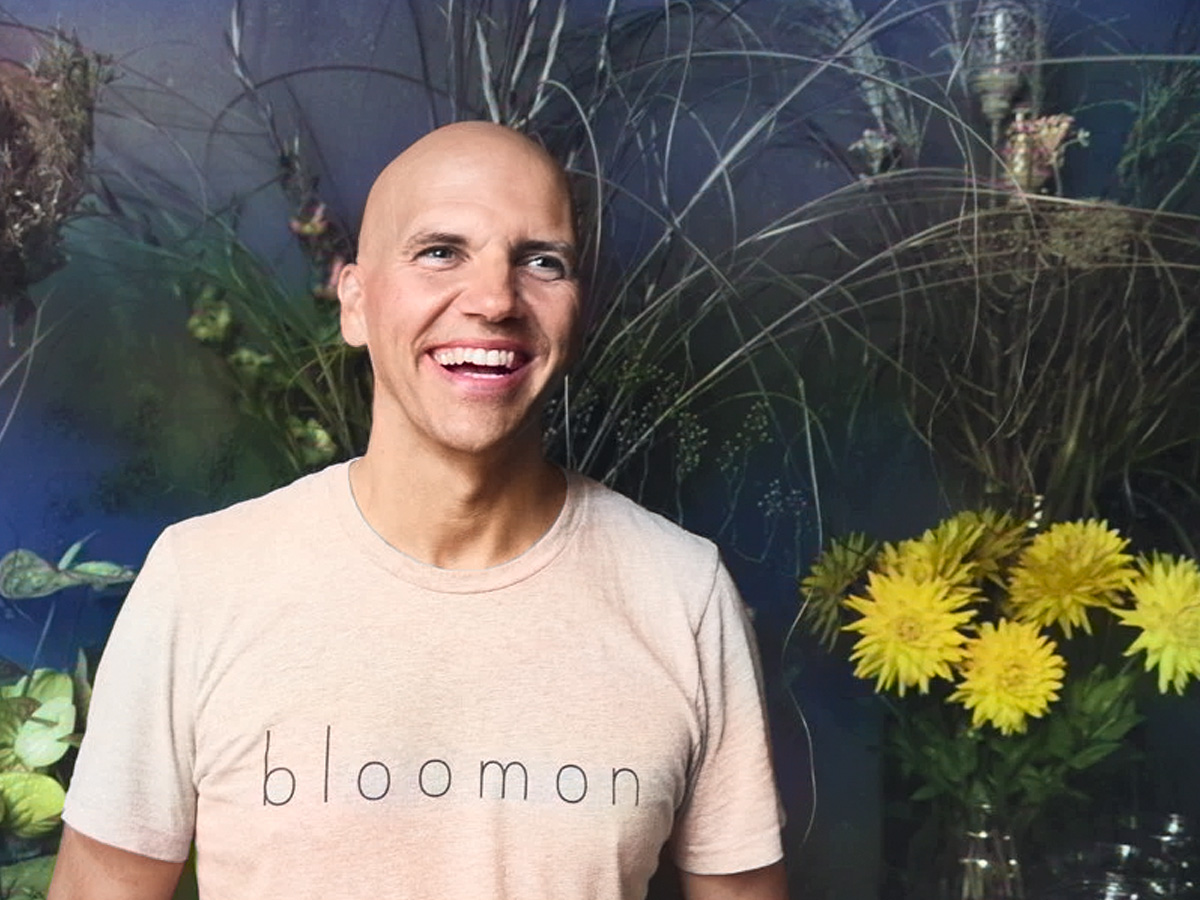
The Challenges of Florists
When I talk to a florist, I often hear, "It's going well, it's fine. Yes, it's going smoothly." But between the lines, I can hear or see where the problems are, especially in flower shops. It itches me to help that person. I am always very helpful, and it just itches me to help someone and further show them that if sales are declining, you can still make a profit if you make the right decisions. This often has to do with purchasing. Or if I notice that the passion has disappeared from the shop, and I can step in as a motivational speaker or give some tips, I think, "Yes, I should do something with that."
It is mainly the small shops that have a lot of trouble keeping their heads above water. So I often see problems there. But also in the larger stores. At a garden center, it is often about not being able to follow the right trends due to the involvement of larger parties and investors who often have no insight into upcoming movements or tendencies. I could help a lot with that. In smaller shops, the pain point is often pride. So if you now name that problem and actually say, "Okay, I recognize it and I acknowledge it. I am going to suggest a solution." Then you see that it is possible to examine such a company thoroughly. You can do a lot. You can actually start by asking a lot of questions, such as "What is your dream?" If you have had a store for fifteen years and you are slacking off, is that dream still the same as fifteen years ago? How did you see that back then? And why did it or didn't it work out? Or do you want to go to another level?
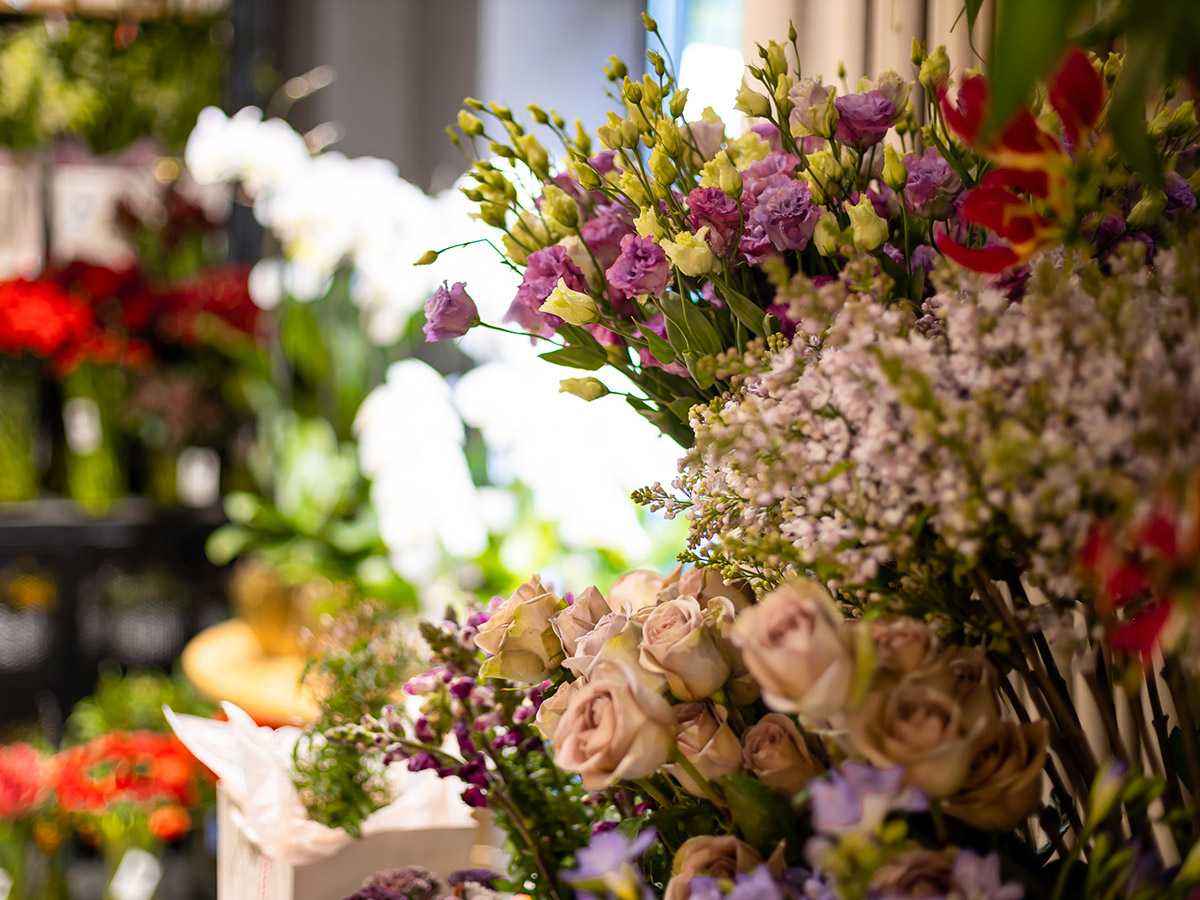
Upgrading the Florist
So I offer to create a total upgrade of your store in three months. We have weekly brainstorming sessions, and you get feedback from them, which you can possibly apply directly to improvements. So you don't have to wait three months before you actually start making money as a small entrepreneur. And that's something I really want to continue. It's not easy because a florist won't just air their dirty laundry. He always says: "My business is doing well." That seems to give a feeling of shame.
Besides being a designer, I am also a trendwatcher. I have worked as a style director at Bloomon for the past nine years. I have been looking at trend forecasting for years. I always want to know "What are we doing now and what will it be like next year." I know exactly what the trends will be next year. I also follow fashion and interior design. I make trend reports for Bloomon. I also do a lot of competitor research. What is the competition doing? Are they growing, how are they growing? Are they copycats? Do they follow their own path? All of this is very interesting to me.
When I help a florist breathe new life into the business, I pay attention to everything. I start by looking at how such a business is run. I also go work in that shop myself for a while. And then I look at how is the staff trained. Is it educated enough? How does sales go? Is it conducted actively? What kind of flowers does one sell? What is the range? What is your profit margin? Is it balanced out well enough? And what about your company's image? Are you putting in enough effort to promote your company and what you do? Then you go into your creativity. What kind of compositions are you making? Are you on trend or not?
Sometimes it's just a matter of bringing in a little creativity and refreshing the shop. Sometimes it is more difficult, and you have to make a more drastic change and start all over again. But I don't know if you should continue if you have lost your passion. But I think most people can regain their passion with minor changes. And if you really can't find that passion anymore, I think it is better to quit, because if you don't do your job with passion, you will never be successful.
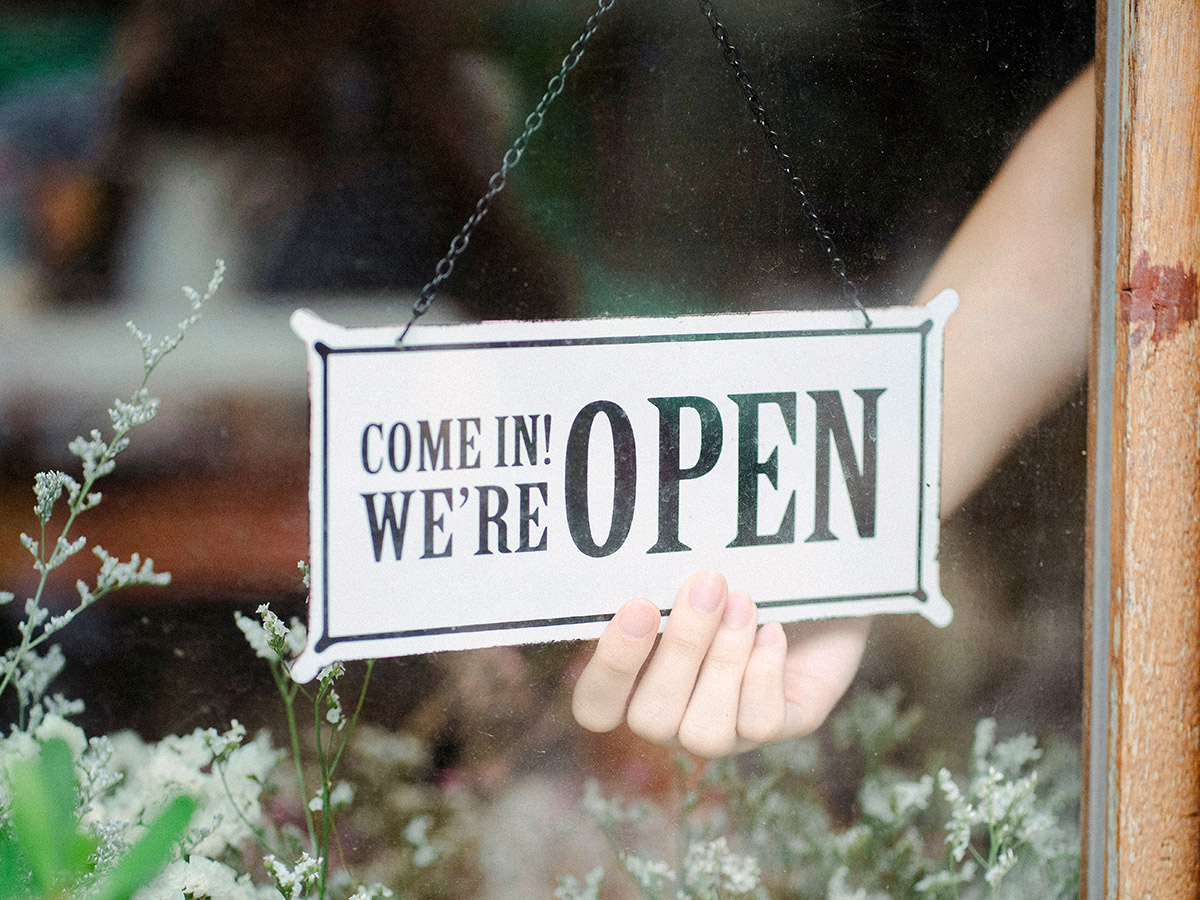
The Challenges of Growers
A grower has to make decisions on what to plant. And how many times have I heard at Bloomon, “So, what do you think will be the trend next year? What bulbs should I order? What should I grow?” I then would always think, “Yes, I can certainly tell you what the color will be next year, but is that enough for you?” I am not sure. You can indeed choose the right bulbs, seeds, or cuttings to grow very beautiful flowers in the trend colors or shapes, but what if you then deliver a subpar final product? Then you won't sell it either. So, it also depends on what and how you deliver something yourself. And I could mean a lot in that regard.
It is mainly about presentation. You could actually see it this way: as a grower, you have a certain product, it doesn't matter what. And I, for example, foresee that in the future – say in about five years – we will move away from having mono colors in flowers, and many more duo colors will emerge. So, a two-colored rose, two-colored carnations; you already see that now. That is actually going to yield much more. We are now in a kind of 80s trend with a lot of graphic design and saturated bright colors like cobalt blue with true red. I see that happening all around me and that will continue until next year. The florists will still get a tail end of that the following year. And then something new will come, and it is always the opposite of what was last. Then I see bicolors and even more nature coming up again.
As a florist, you look for beautiful, new things. You want to be surprised by a beautiful range. If I, as a florist, go to a wholesaler, I can choose between a whole pack of blue or a whole pack of pink. But there are very beautiful yellow tones, apricot tones, you name it. The most beautiful colors already exist. It just isn't delivered much. And why not? Because there isn't much demand for it. Now back to the grower and his link to the florist and end consumer. As a grower... if you can now increase the demand by making beautiful combinations and offering them to the wholesaler, you will ensure that it reaches the customer. The florist who then buys two packs because he is triggered to buy more of it thinks: “Oh, I can sell that to this customer, and I can sell that to that customer.” That florist can even split it up and say: “Well, I'll put those blue and those pink ones together in a pot.” Then he can suddenly ask for more money, and at the same time, he encourages the customer to take an extra bunch for a higher price. This way he upgrades his entire demand and finances, thanks to his grower.
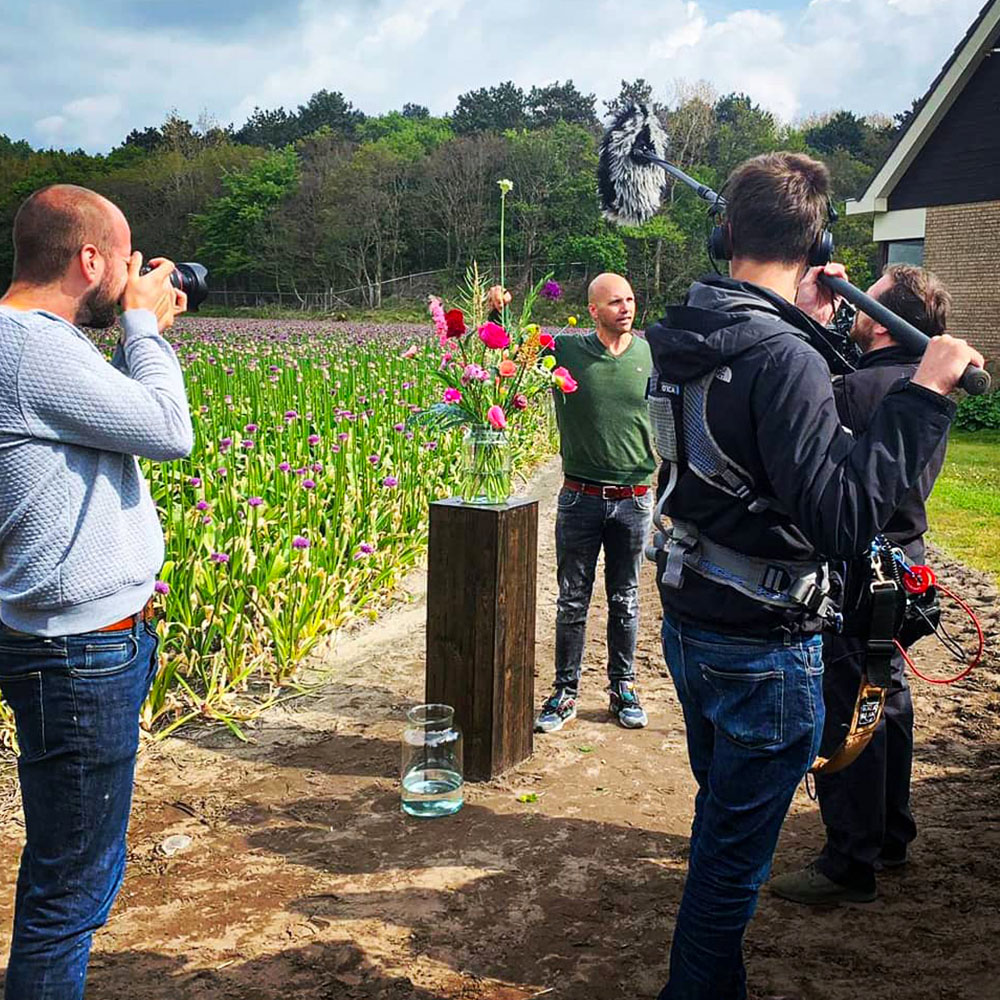
Inspiring the Grower
I think there is a lot, really a lot to be gained for every grower. He just needs the right kind of inspiration and information to dare to change. You can make a kind of 'luxury edition' of everything, from alstroemerias to roses, from hyacinths to French tulips; it doesn't matter what. There is something to think of for everything whereby you can do an upgrade, making those growers' products much more visible, and also immediately responding to the trends of the future. It's basically all in the presentation.
I also substantiate this towards the growers with trend reports. I show where we are going, what the trends of the future are, and where they come from. I can really prove that well. And I foresee that if you are going to sell this product, what the outcome would be. I could possibly also link a company that can research this even further by means of software so that you can validate it with hard figures.
What I offer is change. And change is very difficult. Also for a grower. It's about trust. Of course, a hundred thousand things have already been promised to growers that have never been fulfilled. And all of that cost a lot of money. I often run into that, into those promises that have never been fulfilled. My goal is to become a new name of trust and craftsmanship combined. And that will take some time. I find that quite exciting. I am a crafts enthusiast through and through.
.
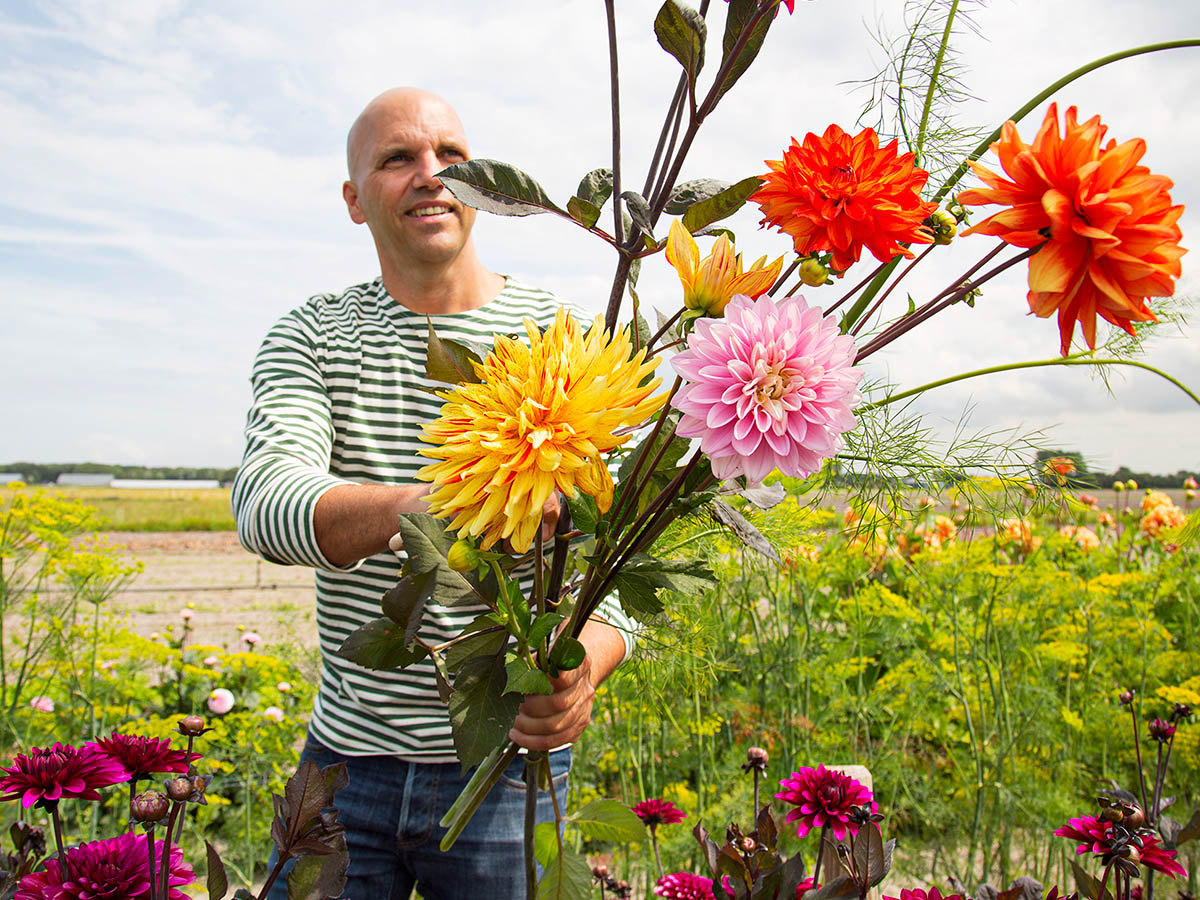
.
Follow the Trends
I would also advise every florist and grower to visit trend fairs. If I can make time, I do that too. It doesn't have to be every year. It is most interesting to do this once every three years, so you really see the changes. Otherwise, you get the feeling that you always see the same thing. And there is also a very nice growth in trend fairs.
As I said, I was born when flower power was at its peak. So I always jokingly say: "Yes, of course, I had to become a florist, there was no other option." But the funny thing is that a kind of flower trend, or nature trend, has arisen that you see recurring over the years. It has never disappeared. Only cast in a slightly different form. Because in the eighties, you also had those wild Biedermeier bouquets full of ivy. That was a different form, but it was also a natural form, so I have always seen it as a wave going through the past fifty years as a wave movement that is now at its peak again. If you recognize that conjuncture, you also already know roughly when a trend will return.
I hope this provides you with a good insight into my work and passion. If you have any more questions or need any advice, feel free to ask.
Email Anton van Duijn, or call him at +31 6 40 18 51 98.
